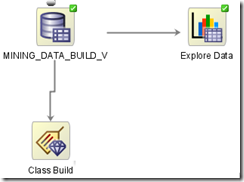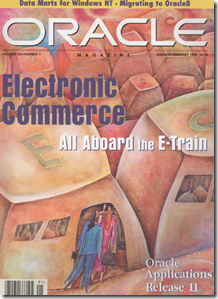November (2012) is going to be a busy month for Oracle users in Ireland. There is a mixture of Oracle User Group events, with Oracle Day and the OTN Developer Days. To round off the year we have the UKOUG Conference during the first week in December.
Here are the dates and web links for each event.
Oracle User Group
The BI & EPM SIG will be having their next meeting on the Tuesday 20th November. This is almost a full day event, with presentations from End Users, Partners and Oracle product management. The main focus of the day will be on EPM, but will also be of interest to BI people.
As with all SIG meetings, this SIG will be held in the Oracle office in East Point (Block H). Things kick off at 9am and are due to finish around 4pm with plenty of tea/coffee and a free lunch too.

Remember to follow OUG Ireland on twitter using #oug_ire
Oracle Day
Oracle will be having their Oracle Day 2012, on Thursday 15th, in Croke Park. Here is some of the blurb about the event, “…to learn how Oracle simplifies IT, whether it’s by engineering hardware and software to work together or making new technologies work for the modern enterprise. Sessions and keynotes feature an elite roster of Oracle solutions experts, partners and business associates, as well as fascinating user case studies and live demos.”
This is a full day event from 9am to 5pm with 3 parallel streams focusing on Big Data, Enterprise Applications and the Cloud.
Click here to register for this event.
Click here for the full details and agenda.
OTN Developer Days
Oracle run their developer days about 3 times a year in Dublin. These events are run like a Hands-on Lab. So most of the work during the day is by yourself. You are provided with a workbook, a laptop and a virtual machine configured for the hands-on lab. This November we have the following developers days in the Oracle office in East Point, Dublin.
Tuesday 27th November (9:45-15:00) : Real Application Testing
Wednesday 28th November (9:00-14:00) : Partitioning/Advanced Compression
Thursday 29th November (9:15-13:30) : Database Security
Friday 30th November (9:45-16:00) : Business Process Management Using BPM Suite 11g
As you can see we have almost a full week of FREE training from Oracle. So there is no reason not to sign up for these days.
UKOUG Conference – in Birmingham
In December we have the annual UKOUG Conference. This is the largest Oracle User Group conference in Europe and the largest outside of the USA. At this conference you will have some of the main speakers and presentations from Oracle Open World, along with a range of speakers from all over the work.
In keeping with previous years there will be the OakTable Sunday and new this year there will be a Middleware Sunday. You need to register separately for these events. Here are the links
OakTable Sunday
Middleware Sunday
The main conference kicks off on the Monday morning with a very full agenda for Monday, Tuesday and Wednesday. There are a number of social events on the Monday and Tuesday, so come well rested.
On the Monday evening there is the focus pubs. This year it seems to have an Irish Pub theme. At the focus pub event there will be table for each of the user group SIGs.
Come and join me at the Ireland table on the Monday evening.
The full agenda in now live and you can get all the details here.
I will be giving a presentation on the Tuesday afternoon titled Getting Real Business Value from Predictive Analytics (OBIEE and Oracle Data Mining). This is a joint presentation with Antony Heljula of Peak Indicators.














